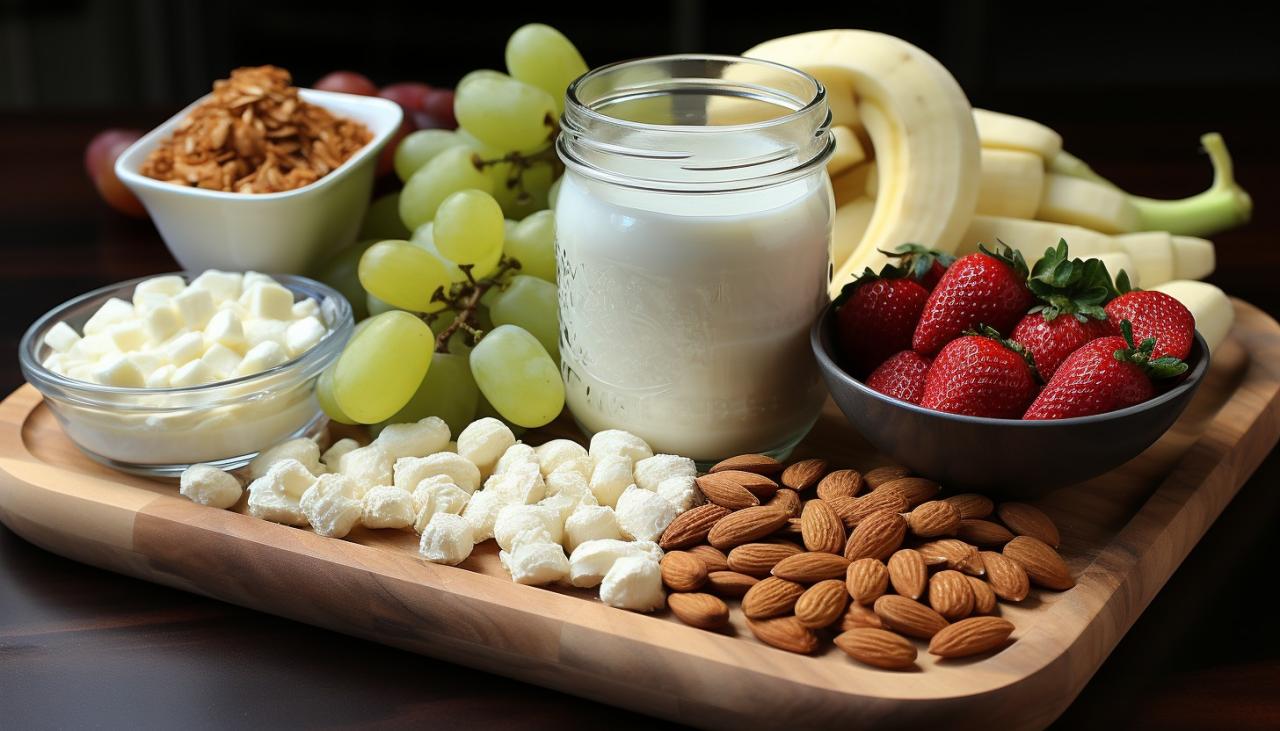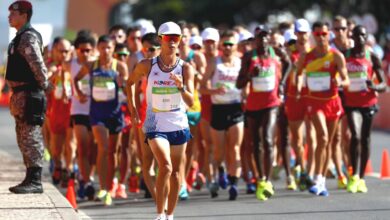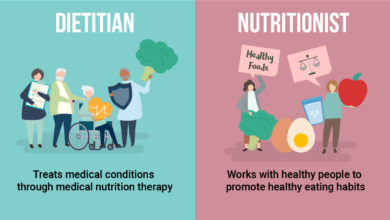
Refueling After a Long Run: Fueling Your Body for Recovery
Refueling after a long run isn’t just about replenishing energy stores; it’s about giving your body the tools it needs to recover, rebuild, and thrive. Think of it as investing in your future performance. Every runner knows the feeling of hitting that wall, the point where your legs scream for a break and your body starts to shut down.
That’s when the importance of refueling becomes crystal clear.
Proper refueling is crucial for muscle repair, glycogen replenishment, and preventing fatigue. But it’s not just about eating anything. It’s about choosing the right foods and drinks at the right time to optimize your body’s recovery process. This blog post dives into the science behind refueling, offering practical strategies to fuel your body effectively after your next long run.
Hydration Strategies After a Long Run
Staying hydrated is crucial for maintaining optimal performance and recovery after a long run. Dehydration can lead to fatigue, muscle cramps, and even heat exhaustion. Proper hydration strategies before, during, and after your run are essential for your overall well-being.
Types of Fluids for Hydration
Choosing the right fluids for hydration is essential, as different beverages offer varying benefits. Water is the most basic and fundamental source of hydration. It replenishes fluids lost through sweat and helps regulate body temperature. Sports drinks, such as Gatorade, Powerade, and others, contain electrolytes like sodium, potassium, and magnesium, which are lost through sweat during intense exercise.
Electrolytes play a vital role in muscle function, nerve impulses, and fluid balance.Electrolyte solutions, such as Pedialyte, are designed to replenish electrolytes lost through dehydration. They are often recommended for individuals who experience severe dehydration, such as after a long run in hot weather.
Fluid Intake Recommendations
The amount of fluid you need to consume before, during, and after a long run depends on factors such as run duration, environmental conditions, and individual sweat rate.
After a long run, my body craves replenishment. I make sure to fuel up with a balanced meal, focusing on protein and complex carbs. But did you know that boosting your metabolism can actually help you burn more calories even at rest?
Check out this article on your secret to burning more calories at rest for some great tips! By incorporating these strategies into my routine, I’m not only replenishing my energy stores after a run, but also maximizing my calorie burn throughout the day.
For a typical long run lasting 2-3 hours in moderate weather, aiming for 16-24 ounces of fluids per hour is a good starting point.
- Before the run:Start hydrating several hours before your run by consuming plenty of water. Aim for 16-20 ounces of water in the 2-3 hours leading up to your run.
- During the run:Sip on water or a sports drink every 15-20 minutes to maintain hydration levels. Adjust your intake based on your sweat rate and the intensity of your run.
- After the run:Continue to rehydrate by drinking water or an electrolyte solution for several hours after your run. Aim to consume 1.5-2.5 times the amount of fluid you lost through sweat during your run.
Environmental Conditions
Environmental conditions, such as heat and humidity, can significantly impact your hydration needs. In hot and humid weather, you may need to increase your fluid intake to compensate for greater sweat loss.
For every hour of running in hot and humid conditions, aim for 24-32 ounces of fluids.
Individual Sweat Rate
Everyone sweats differently. Some individuals may sweat more than others, requiring a higher fluid intake. Monitoring your sweat rate and adjusting your fluid intake accordingly is essential.
After a long run, my body craves replenishment, both in terms of energy and nutrients. While I always prioritize protein and carbohydrates for muscle recovery, I also make sure to get enough vitamin D, which is crucial for bone health and overall well-being.
Since I don’t always have time for long sun sessions, I’ve discovered some great ways to get vitamin D besides sun , like incorporating vitamin D-rich foods into my diet. With a balanced approach to refueling, I feel confident in my ability to recover and prepare for my next run.
You can estimate your sweat rate by weighing yourself before and after your run, taking into account the amount of fluid you consumed.
Refueling for Different Training Goals

Refueling after a long run is crucial for optimizing recovery and enhancing future performance. However, the ideal refueling strategy varies significantly depending on your training goals. Whether you prioritize endurance, speed, or weight loss, understanding your specific needs is essential for maximizing your efforts.
Refueling Strategies for Different Training Goals
The ideal refueling strategy depends heavily on your training goals. Runners aiming for endurance, speed, or weight loss will have different priorities when it comes to replenishing their energy stores and promoting muscle recovery.
- Endurance Runners: These runners focus on maintaining a consistent pace over extended distances. They need to prioritize replenishing glycogen stores and minimizing muscle breakdown. A high-carbohydrate meal or snack rich in complex carbohydrates, such as whole grains, fruits, and vegetables, is crucial for this goal.
Consuming a moderate amount of protein, around 20-30 grams, is also important for muscle repair and recovery.
- Speed Runners: Speed runners prioritize maximizing power output and explosiveness. Their refueling strategies should focus on optimizing muscle protein synthesis and glycogen replenishment. Consuming a high-protein meal or snack, with around 30-40 grams of protein, within 30 minutes after their run is essential for maximizing muscle recovery.
They should also consume a moderate amount of carbohydrates to replenish glycogen stores.
- Weight Loss Runners: Runners aiming for weight loss need to focus on maintaining a calorie deficit while still fueling their body for optimal performance. This involves consuming a balanced diet with moderate amounts of carbohydrates, protein, and healthy fats. Prioritizing protein intake after a run is crucial for preserving muscle mass while losing weight.
Training Intensity and Volume Impact on Refueling
Training intensity and volume significantly impact post-run recovery and refueling needs. Higher intensity workouts deplete glycogen stores and cause greater muscle damage, requiring more significant refueling and recovery efforts.
Refueling after a long run is crucial for muscle recovery and energy replenishment. A balanced meal that’s light yet satisfying is key, and I’ve found that a 250 calorie chicken cauliflower fried rice recipe hits the spot. It’s packed with protein from the chicken, fiber from the cauliflower rice, and healthy fats from the sesame oil, making it a great choice for post-workout nutrition.
- High-Intensity Training: High-intensity training, such as interval workouts or tempo runs, leads to significant glycogen depletion and muscle damage. Therefore, it’s essential to prioritize carbohydrate and protein intake to replenish energy stores and support muscle repair. A high-carbohydrate, moderate-protein meal or snack is recommended within 30 minutes after training.
- Moderate-Intensity Training: Moderate-intensity training, such as easy runs or long runs, requires less intense refueling strategies. While glycogen stores are depleted, muscle damage is less severe. A balanced meal or snack containing moderate amounts of carbohydrates and protein is sufficient for recovery.
- Low-Intensity Training: Low-intensity training, such as walking or light jogging, has minimal impact on glycogen stores and muscle damage. A light snack or meal with moderate amounts of carbohydrates and protein is sufficient for recovery.
Tailored Refueling Recommendations for Specific Training Goals
Here are some tailored refueling recommendations based on specific training goals:
Endurance Runners
- Pre-run: Consume a meal or snack rich in complex carbohydrates, such as whole grains, fruits, and vegetables, 2-3 hours before your run. This will provide sustained energy throughout your workout.
- During Run: Consume a sports drink or energy gels containing carbohydrates and electrolytes to maintain hydration and energy levels during longer runs.
- Post-run: Within 30 minutes after your run, consume a high-carbohydrate meal or snack, such as a whole-grain pasta dish with lean protein or a fruit smoothie with yogurt. This will help replenish glycogen stores and support muscle recovery.
Speed Runners
- Pre-run: Consume a meal or snack high in carbohydrates and moderate in protein, such as a whole-grain sandwich with lean meat or a rice bowl with chicken. This will provide energy for your workout and support muscle recovery.
- During Run: Consume a sports drink or energy gels containing carbohydrates and electrolytes to maintain hydration and energy levels during your workout.
- Post-run: Within 30 minutes after your run, consume a high-protein meal or snack, such as a protein shake or a chicken breast salad. This will maximize muscle protein synthesis and support muscle recovery.
Weight Loss Runners
- Pre-run: Consume a meal or snack low in calories and high in protein, such as a Greek yogurt with berries or a hard-boiled egg with a slice of whole-grain toast. This will provide energy for your workout without adding excessive calories.
- During Run: Consume a sports drink or energy gels containing carbohydrates and electrolytes to maintain hydration and energy levels during your workout.
- Post-run: Within 30 minutes after your run, consume a balanced meal or snack with moderate amounts of carbohydrates, protein, and healthy fats. Prioritize protein intake to support muscle mass preservation.
Refueling on the Go: Refueling After A Long Run
You’ve just finished a long run, and your body is craving fuel. But what if you’re not near home or your usual post-run refueling station? Don’t worry! With a little planning, you can easily refuel on the go and ensure your body gets the nutrients it needs for recovery.
Convenient Refueling Options
A key to successful refueling on the go is to have readily available options. Here are some practical and convenient refueling options for runners:
- Pre-packed snacks:Pack a variety of healthy snacks in advance, such as energy bars, trail mix, dried fruit, or pretzels. These can be easily stored in your running belt, backpack, or even your pockets.
- Portable protein sources:Protein shakes or protein bars are excellent options for a quick post-run protein boost. Choose options that are low in sugar and high in protein.
- Convenient hydration:Carry a reusable water bottle or hydration pack filled with water or a sports drink. Electrolyte-containing drinks are particularly helpful after a long run to replenish lost minerals.
- Fruit:Bananas, apples, oranges, and other fruits are naturally packed with carbohydrates and electrolytes, making them ideal for post-run refueling. They are also easily portable and require no preparation.
Examples of Portable Snacks and Beverages, Refueling after a long run
Here are some examples of portable snacks and beverages that can help you refuel after a long run:
- Snacks:
- Energy bars (look for options with low sugar and high protein)
- Trail mix (choose a mix with nuts, seeds, and dried fruit)
- Dried fruit (mango, cranberries, apricots, etc.)
- Pretzels
- Rice cakes
- Hard-boiled eggs
- Yogurt pouches
- Beverages:
- Water
- Sports drinks (choose options with electrolytes)
- Coconut water
- Protein shakes (pre-made or in a shaker bottle)
Packing and Storing Refueling Essentials
Properly packing and storing your refueling essentials can make a big difference in keeping them fresh and accessible. Here are some tips:
- Use reusable containers:Choose containers that are leak-proof and easy to clean. Reusable snack bags or Tupperware containers are great options.
- Keep it cool:If you’re carrying perishable items like yogurt or hard-boiled eggs, use a small cooler bag with ice packs to keep them cold.
- Pack strategically:Organize your refueling essentials by type and place them in easy-to-access compartments in your running belt, backpack, or hydration pack.
- Label everything:Label your containers with the contents and date so you know what you have and when it needs to be replaced.
Refueling for Specific Dietary Needs

Following a long run, refueling is crucial for recovery and performance. However, runners with specific dietary needs might require tailored approaches to ensure they meet their nutritional requirements. This section explores refueling strategies for vegan, vegetarian, and gluten-free runners, offering plant-based protein sources and alternative fueling options.
Refueling for Vegan and Vegetarian Runners
Vegan and vegetarian runners can easily obtain the necessary nutrients for recovery through a well-planned diet.
- Plant-Based Protein Sources:Include a variety of plant-based protein sources in your post-run meals and snacks, such as:
- Tofu
- Tempeh
- Edamame
- Lentils
- Beans
- Quinoa
- Nuts and Seeds
- Carbohydrate Sources:Prioritize complex carbohydrates for sustained energy release, including:
- Whole grains
- Sweet potatoes
- Fruits
- Vegetables
- Essential Nutrients:Pay attention to essential nutrients like iron, vitamin B12, and omega-3 fatty acids, which can be found in:
- Fortified plant milks
- Nutritional yeast
- Legumes
- Nuts and seeds
- Seaweed
Refueling for Gluten-Free Runners
Gluten-free runners need to ensure they consume gluten-free carbohydrates and protein sources.
- Gluten-Free Carbohydrates:Opt for gluten-free grains and starches, such as:
- Rice
- Corn
- Quinoa
- Buckwheat
- Gluten-free oats
- Gluten-Free Protein Sources:Choose gluten-free protein sources like:
- Meat
- Poultry
- Fish
- Eggs
- Dairy products
- Soy products
- Nuts and seeds
- Read Labels Carefully:Always check food labels for gluten-free certification to ensure the product is safe for your diet.
Resources for Meeting Individual Dietary Requirements
For further information and guidance on meeting specific dietary needs, consult with a registered dietitian or a sports nutritionist. They can provide personalized recommendations based on your individual requirements and training goals. Additionally, several online resources offer information and recipes for vegan, vegetarian, and gluten-free runners.
Conclusion

Remember, your body is a remarkable machine, and refueling after a long run is your way of showing it some love. By prioritizing proper nutrition and hydration, you’re not only supporting your recovery but also setting the stage for your next amazing run.
So, embrace the science of refueling, experiment with different strategies, and find what works best for you. You’ll be surprised at the difference it can make in your performance and overall well-being.






